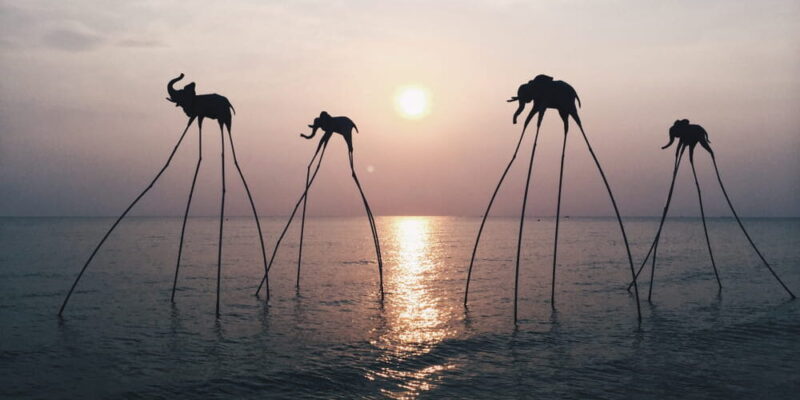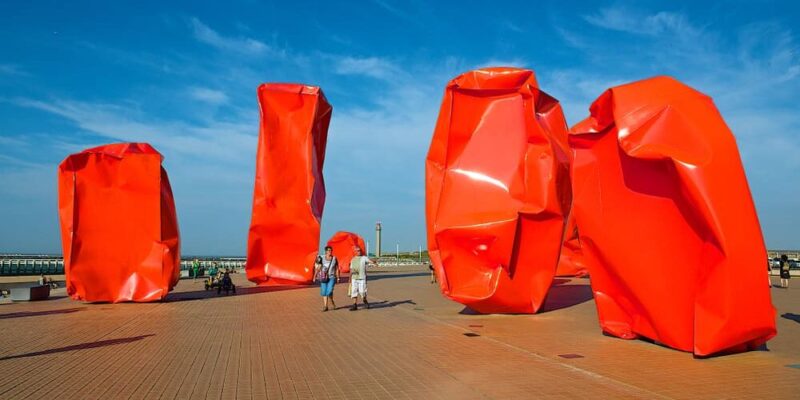We explain what contemporary art is, its origin and characteristics. Also, what are its currents and what is conceptual art.
What is the contemporary art?
The art contemporary comprises artistic expression that emerged from the XX century to the present , so is it also called modern art. The term contemporary means what happens in the present time and includes all the artistic creation of today.
It is a complex type of art due to the variety of movements and disciplines it encompasses. Contemporary artists carry out their works in multiple ways and are influenced by various social issues and issues, unlike the artists of the past who used to be based on issues of religion or mythology.
Contemporary art is usually multifaceted and capable of reflecting popular and technological situations, and it often questions the values and assumptions of society .
Origin of contemporary art
Contemporary art arose as a consequence of the preceding movements, such as the pop art of Great Britain and the United States of the 1960s that was characterized by the use of images and objects of popular use, such as advertisements , comics, product brands or cinematographic videos, among others.
Pop art broke with the abstract expressionism of the early twentieth century, which was characterized by the spontaneity of the artist, especially in painting . Expressionism was a non-figurative art, that is, abstract and that sought to go beyond the limits of the conventional or the rationally correct.
Pop art took elements of everyday life and represented them in irrational , imaginary or contrary contexts or situations . It was a criticism of the new consumer society and mass production, in which image and materialism were the new values of society.
A new conception of art emerged, no longer considered as something beautiful or as a commodity, but conceptual art was more important than the commodity itself. This experimental movement unleashed in contemporary art that included various movements, such as Dadaism , Surrealism and Cubism , among others.
Characteristics of contemporary art
Among the main characteristics of contemporary art are:
- It is the art of the current moment or period .
- Understand artistic expressions that broke with traditional styles and socially acceptable concepts.
- It reflects innovation , both in its mode of expression and in its techniques.
- It is based on an experimental style and with influences of abstract art.
- It is a criticism of the new materialistic society based on mass consumption.
- He considers art as an end in itself , and not as just another consumer merchandise.
Types of contemporary art

The main types or currents of contemporary art that shared the ideology were:
- Cubism . It stood out for being one of the first avant - garde currents, emerged in France, broke with the Renaissance style and was one of the most influential for the following currents. It was characterized by representing the world through geometric figures that recreated fragmented images. The colors used used to be from the same palette of tones. Spanish artist Pablo Picasso is considered the father of Cubism.
- Dadaism . It stood out for being one of the most influential trends in contemporary art. The word "Dadaism" alludes to fantasy, to the first sounds that infants make and that which is far from reality. The term was applied by the Romanian poet Tristan Tzara to designate this movement that originated in Germany . Dadaism was based on a strong criticism of traditional art, breaking with styles, concepts and methods. He freed himself from any type of restriction, to the point that he abhorred the imposed concept of beauty and valued the meaning or intention that the artist gave to the object, over the object itself. It reached multiple disciplines, such as literature , sculpture and photography.
- Fauvism . The name comes from the French fauve which means "beast" and refers to an intense art and character. He stood out for his simple drawings, energetic brushstrokes and the use of intense and different colors with respect to the colors that are perceived in reality. For example: a lemon could be emerald green or trees, intense orange. French artist Henri Matisse is considered the father of Fauvism.
- Constructivism. He stood out for his abstraction, flat geometric shapes with exaggerated perspective, collage-like compositions of photographs on backgrounds with geometric images and contrasting colors. It originated in Russia as a popular art in rejection of the art of the bourgeoisie .
- Neoplasticism. Also called Dutch constructivism, it arose in Holland in 1917. It stood out for the use of straight lines and primary colors captured in a two-dimensional way. He sought to manifest the purity of art from simplification and basic geometric shapes, eliminating all superficial elements.
- Expressionism . He stood out for the excessive use of colors and unrecognizable or distorted shapes that alluded to the world of dreams where reality is perceived differently or irrationally. It originated in Germany and manifested itself in multiple disciplines, in addition to the plastic arts, such as literature, music and photography.
- Surrealism . He stood out for the great influence of Dadaism with fantasy representations, related to the irrational and the unconscious. It arose in France in 1924, after the publication of the "Surrealist Manifesto" by the poet André Bretón, in which he raised the post-war situation of that time and demanded from society the need to investigate the depths of the human being . Sigmund Freud's point of view of psychoanalysis was incorporatedas a method for surrealist creations and it turned out to be an incongruous, dream-related and original art.
- Futurism. Also called dynamic cubism, it stood out for representing images of the world through dynamism, strength and sensuality. It turned out to be an art that emphasized war and everything considered novel and technological. It emerged in Italy in 1909, after the publication of the "Futurism Manifesto" by the writer Filippo Tommaso Marinetti, in which he extolled the speed, power and movement of the new technology machinery , such as industry and the automobile. It manifested itself in multiple disciplines, such as architecture , graphic design and advertising , cinema and poetry .
- Minimalism . It stood out for the minimal and basic use of elements and for representations of the world reduced to the essentials. It emerged in Europe with the German-American architect and industrial designer Ludwig Mies Van Der Rohe, considered one of the pioneers of modern architecture. The term minimalism was designated by the English philosopher Richard Wollheim in 1965 and refers to everything that is reduced to the basics, stripped of accessory or surplus elements. Minimalism sought to express the essence of things and eliminate the superficial.
Conceptual art

Conceptual art emerged in the 20th century and, after continuous change and evolution, continues today. Conceptual art includes any expression that prioritizes the concept of the work over the object or type of art. It is a multidisciplinary manifestation that transgresses the norms, styles, techniques and traditional concepts of art, making it completely free.
Concept art encompasses multiple disciplines, such as philosophy , psychology, and logic . It manifests itself through various media, such as: audiovisual art, multimedia art, found art, graphic design, collage and conceptual photography.
The above content published at Collaborative Research Group is for informational and educational purposes only and has been developed by referring to reliable sources and recommendations from technology experts. We do not have any contact with official entities nor do we intend to replace the information that they emit.
Veronica is a culture reporter at Collaborative Research Group, where she writes about food, fitness, weird stuff on the internet, and, well, just about anything else. She has also covered technology news and has a penchant for smartphone stories. .
Leave a reply
Your email address will not be published. Required fields are marked *Recent post

Sport: What Is It, Types, Risks, Features, Characteristics and Examples

Dogs: Emergence, Features, Characteristics, Feeding and Breeds

Story: Definition, Elements, Structure, Features and Characteristics

